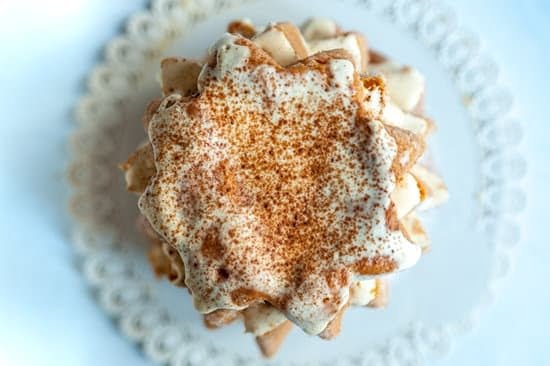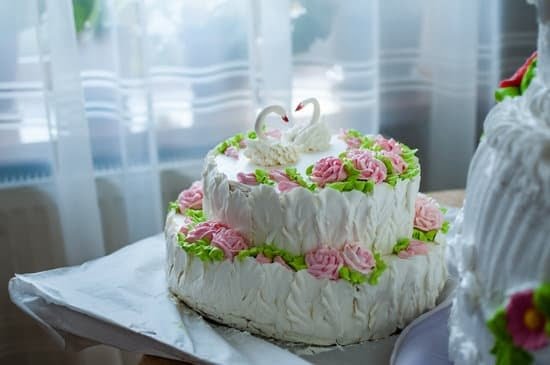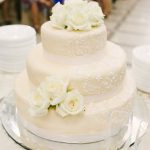Fondant has become a go-to choice for cake decorators looking to create stunning and professional-looking cakes. In this article, we will delve into the art of decorating amazing cool cakes with fondant. Fondant offers a smooth and seamless finish that allows for endless creativity and intricate designs. From simple birthday cakes to elaborate wedding cakes, fondant has captured the hearts of both professional bakers and home enthusiasts.
The versatility of fondant makes it a favorite among pastry chefs and novice bakers alike. Its pliability allows for easy manipulation into various shapes and designs, making it perfect for adding personalized touches to any cake. Whether you’re looking to create a whimsical theme or a sophisticated design, fondant provides a blank canvas ready for your artistic vision.
As we explore the techniques and tips for working with fondant in cake decorating, you’ll learn about essential tools needed, best practices for preparing the cake base, methods for creating vibrant colors, and even troubleshooting common issues that may arise. So get ready to roll up your sleeves, unleash your creativity, and learn how to turn an ordinary cake into an extraordinary work of art with fondant decorations.
Tools Needed
Working with fondant to decorate cakes opens up a world of creative possibilities, but in order to achieve professional-looking results, you’ll need the right tools at your disposal. Here is a list of essential tools that will help you master the art of decorating amazing cool cakes with fondant:
Rolling Pin
A good quality rolling pin is crucial for rolling out fondant to the desired thickness without sticking or tearing. Opt for a non-stick rolling pin or one with guides to ensure even thickness.
Fondant Smoother
A fondant smoother is essential for achieving a smooth and flawless finish when covering a cake with fondant. It helps to eliminate any air bubbles and creases for a professional look.
Decorating Tools
Various decorating tools such as modeling tools, cutting wheels, and shaping molds are essential for creating intricate designs and decorations with fondant. Invest in a set of quality tools to unleash your creativity.
Edible Glue
Edible glue is necessary for attaching fondant decorations, figures, and pieces together on your cake. It provides a secure hold without leaving any visible residue.
By having these essential tools on hand, you’ll be well-equipped to bring your creative visions to life and decorate amazing cool cakes with fondant like a pro.
Preparing the Cake
Fondant has become a popular choice for cake decorating due to its smooth and flawless finish, making it the perfect canvas for creative designs. However, in order to achieve the best results when working with fondant, it is important to start with a cake that is well-suited for fondant decoration. Here are some tips for preparing the perfect cake for fondant:
Choosing the Right Cake Recipe
When baking a cake that will be decorated with fondant, it is crucial to select a recipe that will produce a sturdy and stable base. A dense cake such as a pound cake, chocolate cake, or vanilla sponge cake works best as they can support the weight of the fondant without collapsing or losing their shape.
Leveling and Crumb-Coating
Before applying fondant to your cake, it is essential to level the top of the cake to ensure a smooth surface. Use a serrated knife or a cake leveler to trim any domed areas. It is also recommended to apply a thin layer of frosting known as a crumb coat to seal in any loose crumbs and provide a smooth foundation for the fondant.
Cooling and Chilling
Once the cake has been baked and frosted, allow it to cool completely before applying fondant. For easier handling, refrigerate or freeze the frosted cake for about 30 minutes until firm but not frozen. This will make it easier to cover the cake with fondant without causing any damage to its shape or structure.
By following these tips for preparing your cake before decorating with fondant, you will set yourself up for success in creating stunning and professional-looking cakes. With a solid foundation and proper techniques, you can easily learn how to decorate amazing cool cakes with fondant like a pro.
Coloring Fondant
Fondant is a versatile and popular choice for cake decorators looking to create stunning and professional-looking cakes. One of the key factors in achieving visually appealing results with fondant is mastering the art of coloring it effectively. By using the right techniques, you can achieve vibrant hues and bring your creative cake designs to life. Here are some tips on how to color fondant like a pro:
- Start with white fondant: To achieve the brightest and most consistent colors, it’s best to start with white fondant as your base. This will allow you to easily customize the shade of your fondant without any unwanted undertones affecting the final result.
- Use gel food coloring: Gel food coloring is preferred over liquid food coloring when working with fondant. Gel colors are highly concentrated, allowing you to achieve intense colors without altering the consistency of the fondant.
- Knead thoroughly: When adding color to fondant, make sure to knead it thoroughly until the color is evenly distributed. This will ensure that your final decorations have a uniform hue throughout.
Whether you’re looking to create a pastel palette or bold, eye-catching colors for your cake decorations, mastering the art of coloring fondant is essential. With these techniques and some practice, you’ll be able to achieve vibrant and beautiful hues that will take your cake decorating skills to the next level.
When working with fondant, remember that creativity knows no bounds. Experiment with different color combinations, shading techniques, and even mixing various colors together to create unique shades for your cake decorations. Don’t be afraid to get creative and let your imagination run wild when it comes to coloring fondant for amazing cool cakes.
Rolling Out Fondant
Working with fondant can elevate your cake decorating skills to the next level, allowing you to create stunning and professional-looking designs. Rolling out fondant is a crucial step in the process, as it sets the foundation for the overall look of your cake. To achieve a smooth and even finish, there are some key steps to follow on how to decorate amazing cool cakes with fondant.
Before you begin rolling out your fondant, make sure to dust your work surface with a small amount of powdered sugar or cornstarch to prevent sticking. Knead the fondant until it is pliable and smooth, then use a rolling pin to flatten it into a disc shape. Start rolling from the center outwards, rotating the fondant periodically to ensure an even thickness.
When rolling out fondant, aim for a thickness of about 1/8 of an inch for best results. If the fondant starts to stick or tear while rolling, gently lift it up and dust more powdered sugar or cornstarch underneath. Be patient and take your time to avoid any cracks or uneven patches in the fondant.
Once you have achieved your desired thickness, carefully lift the rolled-out fondant with a rolling pin and drape it over your prepared cake. Smooth out any air bubbles or wrinkles using a cake smoother or your hands, working from the top down and around the sides. With practice and attention to detail, you can master the art of rolling out fondant smoothly and evenly, creating show-stopping cakes that will impress everyone who sees them.
Applying Fondant
When it comes to decorating cakes with fondant, one of the most crucial steps is applying the fondant smoothly and evenly to achieve a flawless finish. Here are some methods to help you cover your cake with fondant like a pro:
- Start by preparing your cake – make sure it is properly leveled and frosted with a thin layer of buttercream or ganache to help the fondant adhere easily.
- Dust your work surface with powdered sugar or cornstarch to prevent sticking, then roll out your fondat evenly using a rolling pin. Aim for a thickness of about 1/8 inch for best results.
- Once rolled out, carefully lift the fondant over your rolling pin and drape it over your cake. Gently smooth the top and sides of the cake to remove any air bubbles or wrinkles.
If you are working with a larger cake or struggling to cover it entirely in one piece, consider using the paneling method. This involves covering each side of the cake separately with fondant panels that are smoothed together at the seams for a seamless look.
Remember that practice makes perfect when it comes to applying fondant to cakes. Don’t be discouraged if you don’t get it right on your first try – keep experimenting and honing your skills. With time and patience, you will be able to decorate amazing cool cakes with fondant like a professional baker. Let your creativity shine through as you master the art of working with fondant.
Fondant Sculpting
One key tip for fondant sculpting is to start with a firm and smooth base. Make sure that the fondant you are working with is pliable but not too soft. This will help in shaping and detailing your sculptures without losing their form. Additionally, using modeling tools can be extremely helpful in creating intricate details such as textures, shapes, and facial features on your fondant decorations.
When sculpting fondant figures, it’s important to work slowly and patiently. Start with a simple shape as the base of your figure and gradually add details layer by layer. Remember that practice makes perfect, so don’t get discouraged if your first few attempts don’t turn out exactly as you envisioned. With time and dedication, you’ll develop the skills needed to create stunning fondant decorations that will wow your friends and family.
| Fondant Sculpting Techniques | Description |
|---|---|
| Creating flowers | Use flower cutters or freehand shaping to craft beautiful floral decorations for your cakes. |
| Designing animals | Start with basic shapes then add details like eyes, ears, tails to make adorable animal figurines. |
| Making patterns | Roll out differently colored fondants then cut or mold them into patterns such as stripes, polka dots, or chevrons. |
Finishing Touches
When it comes to decorating cakes with fondant, the finishing touches can truly make a cake stand out and leave a lasting impression. One popular way to add a touch of elegance and sophistication to a fondant cake is by incorporating edible metallic accents.
Edible gold or silver leaf, as well as metallic luster dust, can be used to create a shimmering effect on various elements of the cake. Whether you decide to add a touch of gold to floral decorations or create a metallic ombré effect on the cake tiers, incorporating metallic accents can elevate your fondant cake design.
In addition to metallic accents, another way to make your fondant cake stand out is by adding texture and dimension with edible decorations. You can use textured rolling pins or molds to create intricate patterns on the fondant surface or add edible lace details for a delicate finish.
Furthermore, using edible sequins, pearls, or sugar crystals can add sparkle and shine to your cake design. By combining different textures and dimensions, you can create a visually stunning fondant cake that not only looks amazing but also tastes delicious.
Lastly, you can take your fondant cake decoration to the next level by incorporating personalized elements that reflect the occasion or theme of the celebration. Whether it’s creating edible sugar flowers that match the color scheme of a wedding or sculpting fondant figures that resemble beloved characters for a birthday party, adding personalized touches can make your fondant cake truly special.
By infusing creativity and customization into your design choices, you can create a one-of-a-kind masterpiece that will awe and inspire all those who see and taste it.
| Ideas | Description |
|---|---|
| Edible Metallic Accents | Incorporate gold or silver leaf, metallic luster dust for an elegant shimmering effect |
| Texture & Dimension | Use textured rolling pins, molds, lace details, sequins, pearls for added visual appeal |
| Personalized Elements | Create sugar flowers matching color schemes, sculpt figures reflecting themes for unique touch |
Troubleshooting
Working with fondant can be a fun and creative way to decorate cakes, but it can also come with its own set of challenges. From sticky fondant to cracks and tears, there are common issues that may arise when working with this versatile cake decorating material. However, with some troubleshooting tips and solutions, you can overcome these obstacles and create amazing cool cakes with fondant.
One common issue when working with fondant is air bubbles forming underneath the surface, which can cause unsightly bulges on your cake. To prevent this problem, make sure to knead the fondant well before rolling it out to remove any air pockets.
When applying the fondant to the cake, gently smooth it out from the center to the edges to push out any trapped air. If air bubbles still appear, use a small pin to prick them and then gently smooth the surface again for a seamless finish.
Another frequent problem that bakers encounter when decorating cakes with fondant is cracking or tearing of the fondant while covering the cake. This can happen if the fondant is rolled out too thin or if it dries out too quickly.
To avoid this issue, ensure that your work surface is lightly dusted with cornstarch or powdered sugar before rolling out the fondant. Additionally, work quickly but carefully when applying the fondant onto the cake to prevent it from drying out before it’s in place.
Lastly, color bleeding is a common issue that can occur when using vibrant colored fondant on a white base or light-colored cake. This happens when moisture from the colored fondant seeps into the lighter layers underneath, causing streaks or splotches.
To prevent color bleeding, allow dyed fondant to air dry for a few hours before placing it on the cake. You can also use a barrier layer such as buttercream frosting between colored and light-colored fondant to minimize any chances of bleeding and maintain clean colors on your finished cake.
By following these troubleshooting tips and solutions when working with fondant, you can ensure a smoother decorating process and create amazing cool cakes that will impress your friends and family. Don’t be discouraged by challenges that may arise – embrace them as learning opportunities to improve your skills and creativity in cake decoration using fondant techniques.
Conclusion
In conclusion, mastering the art of fondant cake decorating can truly elevate your baking skills to new heights. By following the tips and techniques outlined in this guide, you can learn how to decorate amazing cool cakes with fondant like a pro. From choosing the right tools to sculpting intricate decorations, every step plays a crucial role in creating stunning cakes that are bound to impress.
Remember that practice makes perfect when it comes to working with fondant. Don’t be discouraged by any initial challenges you may face – troubleshooting common issues and finding solutions will only help you improve your skills. The key is to experiment, get creative, and have fun with your designs. Whether you’re aiming for a sleek modern look or whimsical decorations, fondant provides endless possibilities for customization.
In the end, decorating cakes with fondant is an art form that allows you to express your creativity and bring joy to others through your delicious creations. So don’t hesitate to dive in and start experimenting with different techniques and styles. With dedication and passion, you’ll soon be wowing everyone with your beautifully decorated fondant cakes.
Frequently Asked Questions
Can You Put Fondant Decorations on a Cold Cake?
Yes, you can put fondant decorations on a cold cake. In fact, it is often recommended to work with fondant on a chilled cake as it provides a firm surface for the decorations to adhere to without the risk of smudging.
How Long to Cool Cake Before Fondant?
It is generally advised to cool a cake completely before covering it with fondant. This process can take anywhere from 1-2 hours, depending on the size of the cake and the temperature of your kitchen. Cooling helps prevent the fondant from melting or becoming too soft when applied.
Can You Stick Fondant to Buttercream?
Fondant can be stuck to buttercream, but there are a few things to keep in mind. It’s important that your buttercream is not too soft or oily, as this can cause the fondant decorations to slide off. Additionally, lightly brushing the buttercream with water or piping gel can help the fondant stick better to the surface.

Welcome to my blog about home and family. This blog is a place where I will share my thoughts, ideas, and experiences related to these important topics. I am a stay-at-home mom with two young children. I hope you enjoy reading it! and may find some helpful tips and ideas that will make your home and family life even better!





